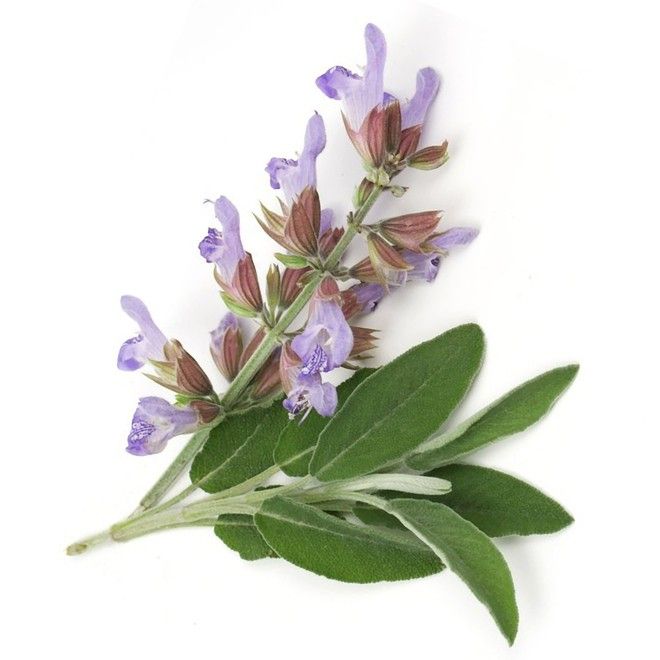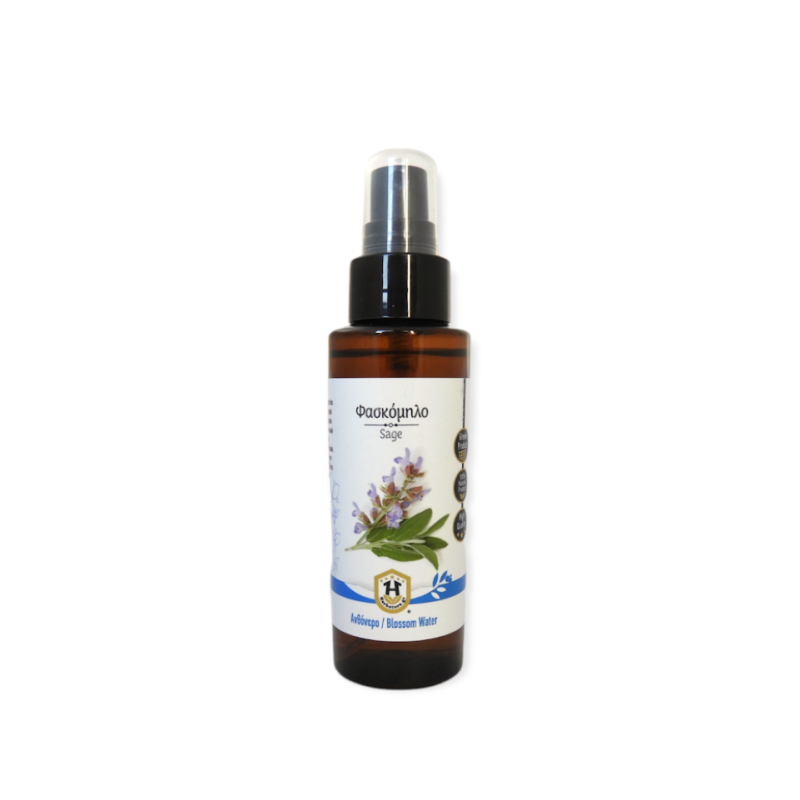Packaging 100ml (or 200ml, 1000ml) containing Sage Hydrosol. (The price includes VAT.)
Sage hydrosol is obtained through the process of distillation, as hydrosols are by-products of the distillation of herbs or flowers and retain many of the properties of the essential oils of the plants from which they are derived.
Wild Sage Hydrosol is ideal for cosmetic facial care and skin cleansing. It is particularly recommended for normal to combination skin. It has strong disinfectant, antibacterial, and antibiotic properties and helps combat acne (in combination with Thyme & Lavender Hydrosols) and skin problems caused by hormonal imbalances. It is moisturizing, toning, and refreshing, while also soothing and relieving sun-irritated skin, especially in summer. It has significant antioxidant and anti-wrinkle action and helps smooth fine lines and expression wrinkles. Additionally, it strengthens thin and weak hair while combating hair loss. Apply Sage Hydrosol to your hair after washing and let it dry (do not rinse again).
Furthermore, it helps fight fungal infections. Feel free to use it on your entire body, especially on your feet (along with Thyme Hydrosol), and let it work.
Salvia pomifera, commonly known as wild sage or bitter sage, is an evergreen aromatic shrub of the Lamiaceae family, reaching up to 1.30 meters in height. It typically grows in rocky, limestone, barren regions of Northern Greece, the Peloponnese, Crete, and the islands at altitudes up to 1100 meters. It has gray color with many upright stems, which are tough and flexible, and large elongated leaves with wavy edges, located at the base of the shrub, with a strong scent and taste resembling lavender and common sage. The flowers and calyxes are clustered at the ends of the stems, and after flowering, the calyxes take on a beautiful reddish color. The stems bear small round galls, which are edible and are said to quench thirst. In the past, villagers collected these galls on May Day and boiled them with sugar. The plant blooms from April to June.
The name Salvia comes from the Latin verb salvare, meaning "to save lives," and this name is no coincidence. Sage has been used since ancient times. The ancient Greeks considered it a sacred plant dedicated to the god Zeus. Women in ancient Greece welcomed men from war with a sage tea to "boost" fertility. During the Middle Ages, it was widely used for health problems, and Charlemagne ordered it to be planted in vegetable gardens and monastery gardens. During epidemics, especially cholera, it was believed that those who had sage planted at home need not fear death. The Arabs believed that sage could heal everything. The Latins considered it the sacred plant of immortality and used it in ceremonies. The French call it "Greek tea" and, like other Europeans, use it in both cooking and as a medicinal herb. The Chinese called it "Greek brew" and considered it better than tea. They valued it so much that during the peak of trade between Chinese tea and the West, they would exchange two bundles of Chinese tea for one bundle of sage.
Wild Sage is predominantly a medicinal plant. It is also used as a commercial food flavoring, a cosmetic ingredient, and in cooking. During its flowering period, it is a bee-foraging plant. It is endowed with many therapeutic substances and properties that are particularly useful in medicine, such as antibacterial, antiseptic, cardiotonic, antispasmodic, and antidiabetic actions. The herbalist John Gerard in the late 16th century claimed that sage accelerates the function of the nervous system and memory, a view that has been fully confirmed today. It also has antibiotic, antifungal, antidiarrheal, hypoglycemic, and significant estrogenic effects. Additionally, it helps with insect bites from mosquitoes and wasps, improves the color of dark and gray hair, tones and gives shine to dry and sensitive hair, and is used cosmetically as a deep cleansing facial mask and in steam treatments.
Caution: Wild Sage Hydrosol should not be used during pregnancy and breastfeeding. Excessive use should be avoided, as in large doses, it can be toxic due to the substances it contains (thujone, tichone).
All hydrosols available at Herbstore are 100% pure. They contain no chemicals, preservatives, or additives. The hydrosols are UV-filtered to remove harmful substances, ensuring they reach you in their purest form.
Friends and professionals involved in massage and aromatherapy can contact us to receive a 10% discount on the price of our hydrosols.
The dark amber packaging ensures optimal protection of these natural treasures from light and UV radiation, while the pharmaceutical-grade amber plastic of the packaging leaves no plastic residue in the product!
Sage Hydrosol is produced in Greece under the strictest European standards, using only pure and certified raw materials.
Origin: Greece, Imathia region.







